One of my favourite games of the PS3 era and originally developed for the Nintendo DS in Japan, Ni No Kuni: Wrath of the White Witch is no stranger to the upgrade treatment. Ni No Kuni follows the story of Oliver and his adventure to save his mother while restoring broken hearts in two parallel worlds with the help of his newly animated doll Drippy whose Welsh accent never ceases to be amusing and affable. In fact, he steals the show in terms of voice acting whereby the other characters feel like a wooden portrayal of English and American stereotypes even when presented with the lovable anthropomorphic characters you find along the way. In a true Studio Ghibli fashion, Ni No Kuni while aimed at a younger audience does a fantastic job of keeping things light and magical, the game truly shines when analysed by adults who can appreciate the darker undertones of loss and the power of a mother’s influence.

Inspired and jointly produced by the animated movie superpower that is Studio Ghibli, Ni No Kuni is an artistic delight to behold and takes inspiration from 1950’s steam works and industry while still finding a way to seamlessly blend in magic and mythical environments with kingdoms, enchanted forests and haunted mountains. Each one bringing its own whimsical soundtrack that paints a mental image of the overall theme and predisposition of its denizens.
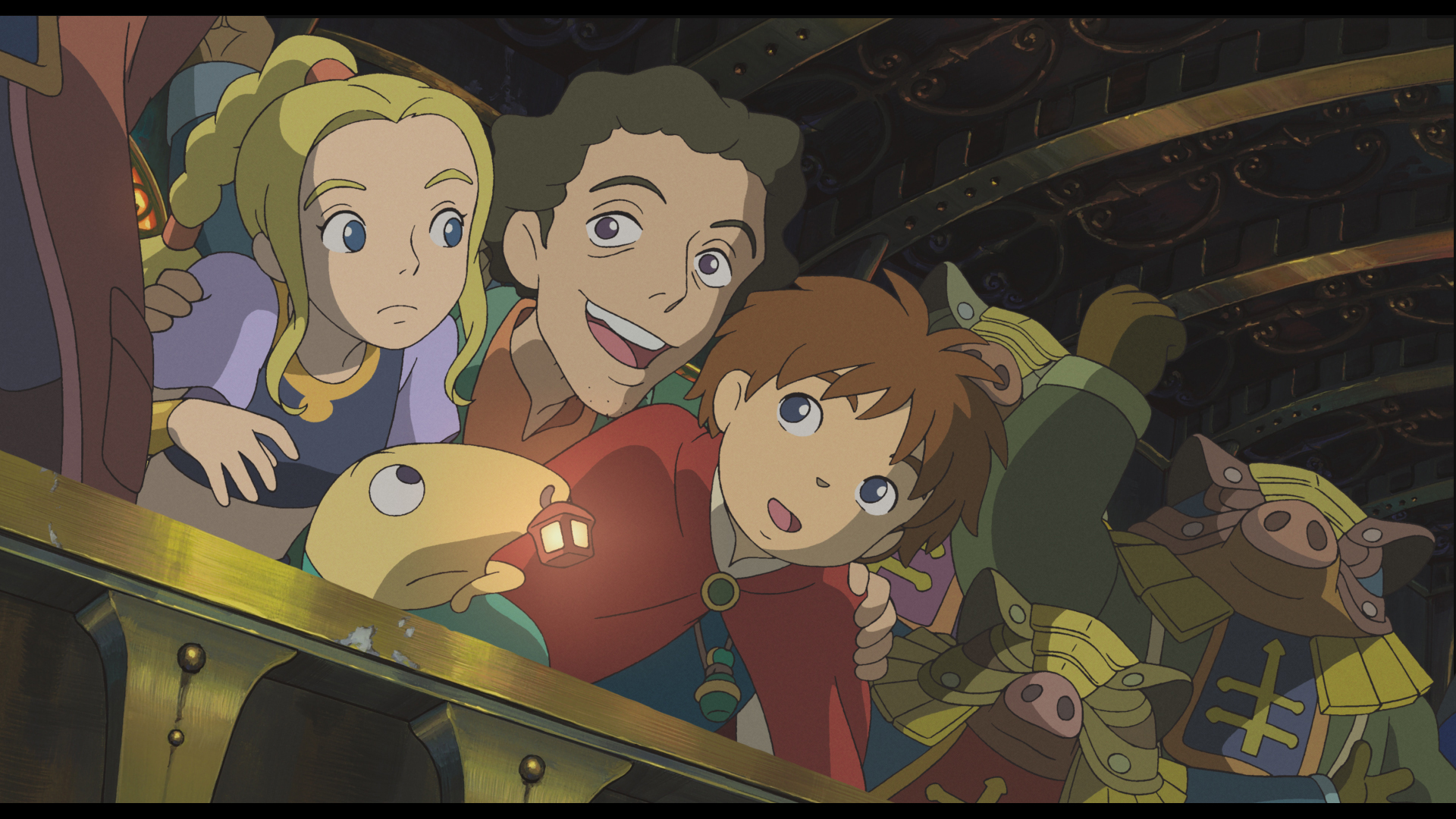
As you progress through the game Oliver will learn spells by collecting pages of the wizard’s companion that either help in battle, provide utility for exploration or open up new quest dialogue as you “Mend” people’s broken hearts… essentially taking emotions from willing participants who have an abundance of joy, energy, confidence etc. and giving to others who need it. It’s an interesting analogy for mental health. Everyone needs help sometimes and we should be just as willing to lend a hand as much as we are to receive regardless of whether we can see the impact of our altruism.
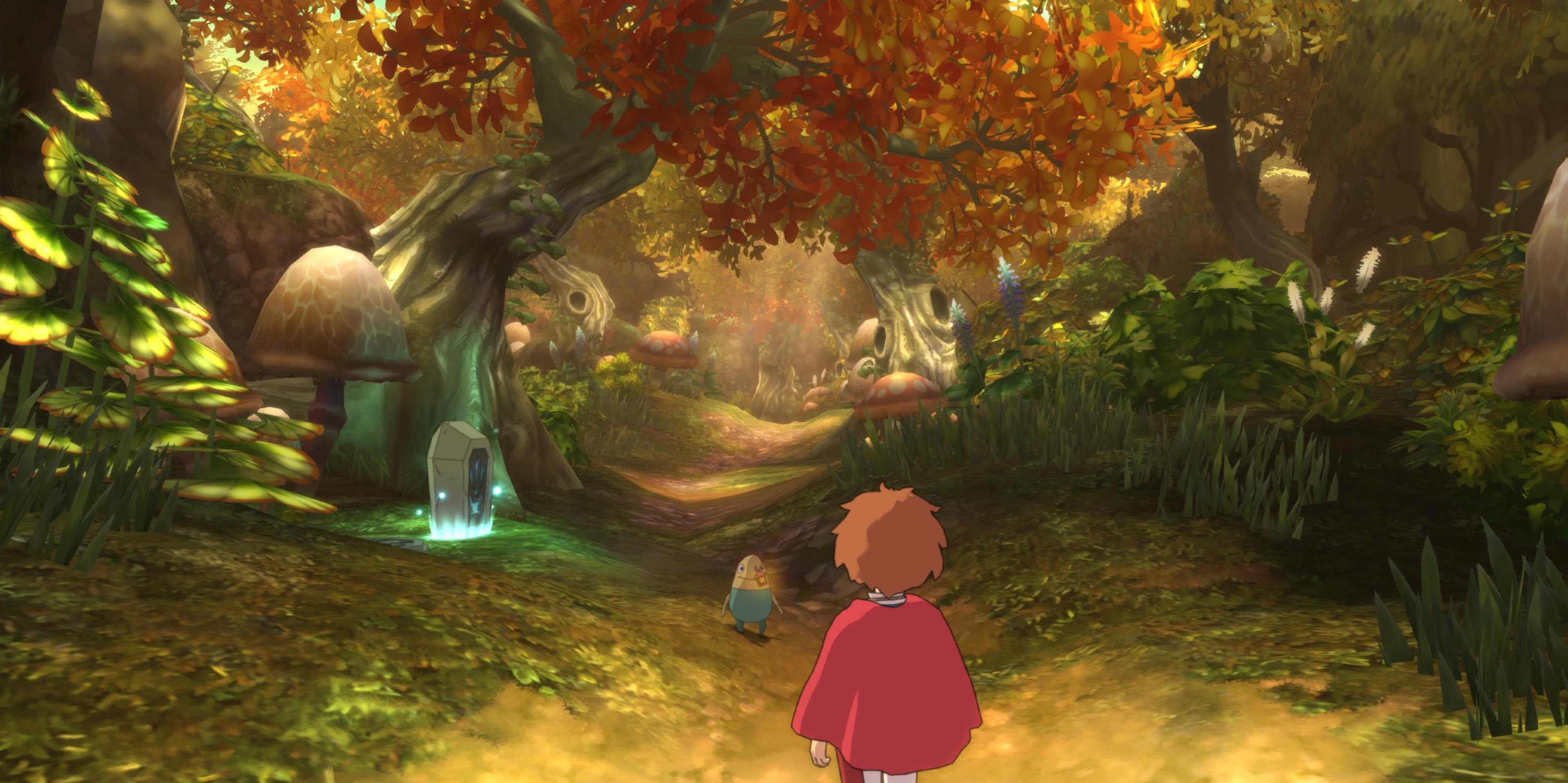
While many of the spells are mostly situational it’s never too hard to figure out what is being asked of you when the dungeons throw a puzzle or obstacle your way. Younger players will also have Drippy to hold their hand through the majority of the puzzles and battle related set pieces. This in turn leads to dungeons and exploration being mostly linear with divergent paths towards new weapons and armour. It’s not a good or bad thing, just more of an average expectation of the RPG genre however I wished and willed for Oliver to run a little faster so backtracking could be more of an easy-going affair.

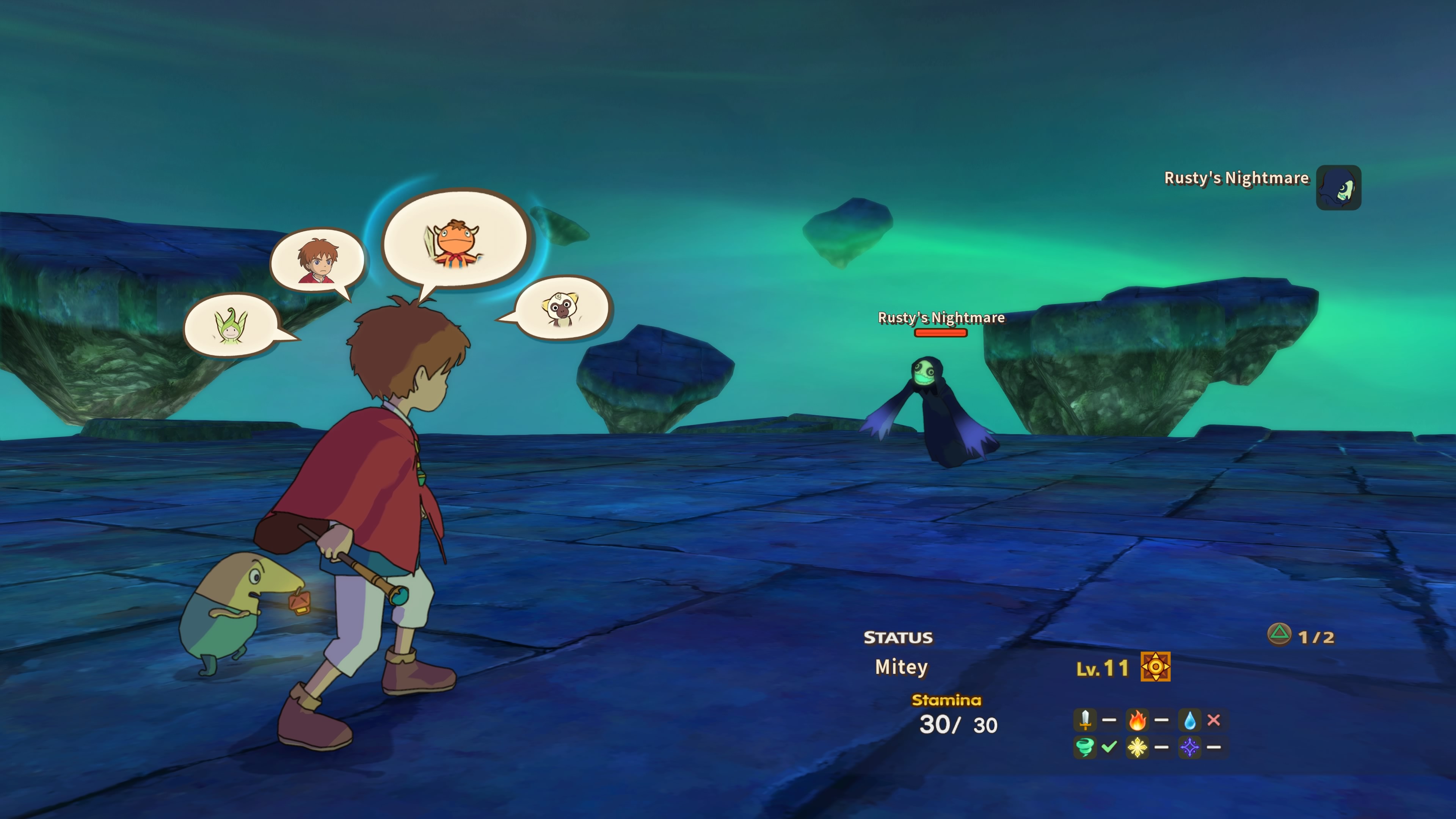
Encountering enemies either in dungeons or the overworld will initiate a battleground in a typical RPG fashion where you and your A.I. controlled allies will use “Familiars” to fight in real time and potentially recruit them upon defeat – extending your elemental range against your enemies. The unique factor in this pokemon-esque monster collection battle system is that your familiars are subject to a cooldown whereby they have to be swapped out periodically to recharge before they can fight again. Levelling up these familiars will introduce you to their evolved forms with broader skill sets and boosted stats. You can also boost their individual stats further by feeding them with a plethora of treats.
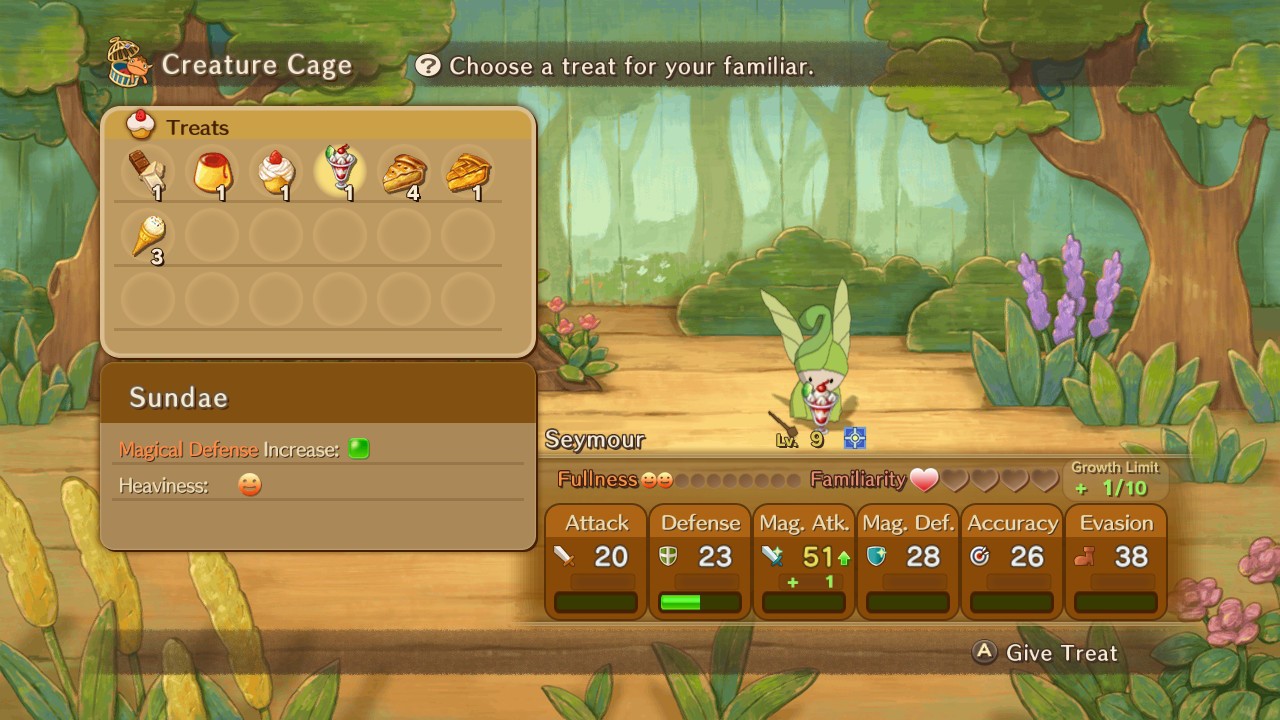
The problem with this system is that the stat boosts are redundant in comparison to a small amount of level grinding or equipment upgrade and it’s not always the case that the desired stat boosting item correlates to the familiars favoured snack, therefore requiring them to be fed an obnoxious number of treats before reaching even a single stat boost. This is without mentioning the fullness meter, expenditure, item gathering and crafting involved when using higher quality snacks – It’s a complimentary boost if you have the items rather than something to be investing mass amounts of time and effort into.
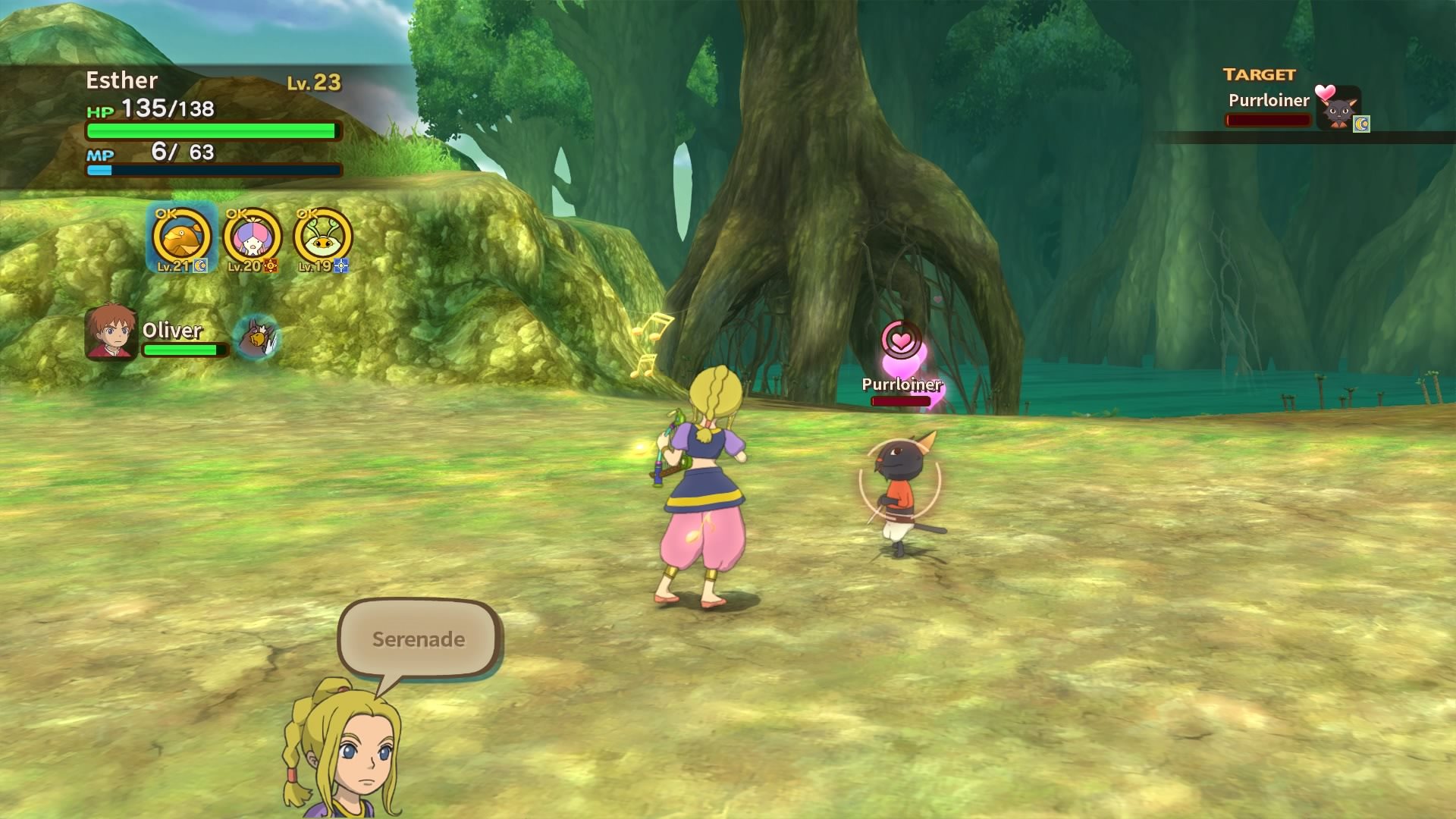
The luck involved in recruiting these familiars can be as forgiving as it is relentlessly brutal. With recruitment rates being as low as 4% I found myself on many occasions spending hours fighting familiars I absolutely had to have on the grounds of it being far too adorable for its own good. To compliment this already time intensive endeavour is a divergent evolution path for each species of familiar in their final forms – so you need to tame and nurture 2 of each familiar if like me you NEED to 100% your games.
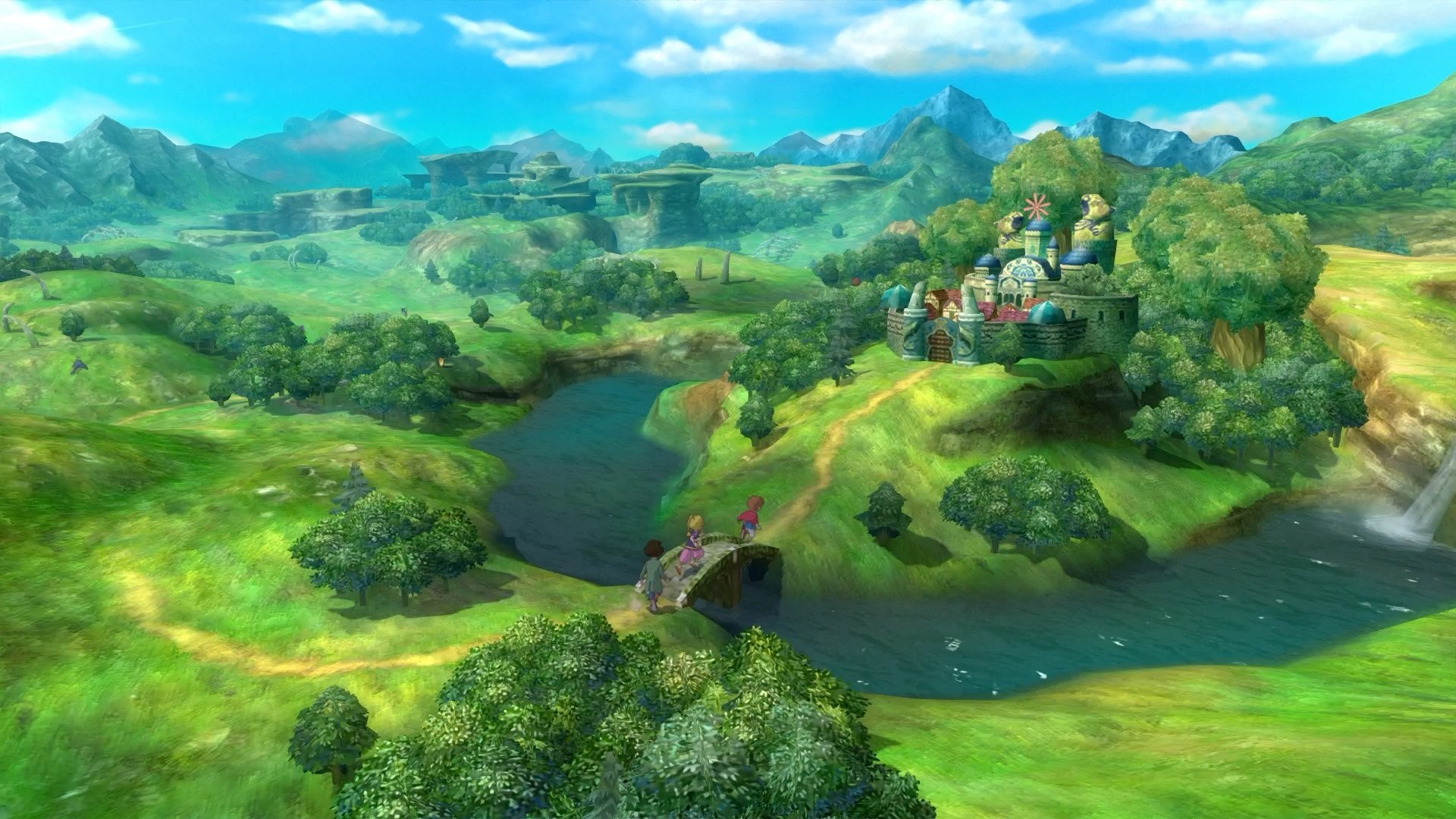
From a completionists perspective this game is unfortunately filled with more sighs than enjoyment. In a typical RPG fashion expect a multitude of obsolete collectables, stagnant side quests, an extensive list of alchemy recipes and low item drop rate materials that will take up days of your life. Ni No Kuni suffers from what I can only assume is a concerted effort to differentiate itself from standardised RPG elements and overcompensates with layers upon layers of gameplay mechanics and sub-systems in its attempt to be unique. That being said it is certainly a memorable experience thanks to the art style, music and overall narrative that brings to light an endearing tale of a young boy wanting nothing more than to bring hope not only to his own life but to others around him.
